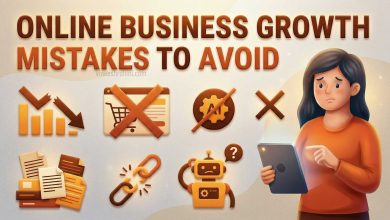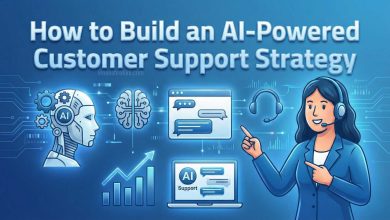The Future of Ecommerce: How a Product Becomes a Purchase
E-commerce has been around for over two decades, but it’s still evolving rapidly. As the digital world expands, the future of e-commerce continues to look bright. The e-commerce industry has come a long way since its early days of selling products online. Today, consumers can purchase just about anything online, from clothing to groceries to electronics, and have them delivered to their doorstep. In this essay, we will explore the future of e-commerce and how a product becomes a purchase.
Evolution of E-commerce
The e-commerce industry has come a long way since its inception in the 1990s. In the early days, consumers were hesitant to shop online due to security concerns and a lack of trust in online retailers. As the internet became more ubiquitous, e-commerce began to gain traction. The rise of mobile devices and social media further accelerated the growth of e-commerce.
Today, e-commerce is a booming industry, with sales expected to reach $6.54 trillion by 2023. The future of e-commerce looks promising, with new technologies emerging and consumer behavior changing.
1000+ Readymade Landing Page Templates with Elementor Pro
The Future of E-commerce
The future of e-commerce is shaped by three key trends: technology, consumer behavior, and market trends.
- Technology
Technological advancements are a driving force behind the future of e-commerce. One of the most significant technological trends is the rise of artificial intelligence (AI). AI-powered chatbots and virtual assistants are becoming increasingly common in e-commerce, providing consumers with a personalized shopping experience.
1000+ Readymade Landing Page Templates with Elementor Pro
Another emerging technology is augmented reality (AR) and virtual reality (VR). AR and VR technologies can help consumers visualize products and see how they would look in their homes before making a purchase.
Blockchain technology is also making its mark in e-commerce. Blockchain can be used to create secure and transparent supply chains, helping consumers verify the authenticity of products and reducing the risk of fraud.
- Consumer Behavior
Consumer behavior is another key trend shaping the future of e-commerce. As more consumers turn to e-commerce, they expect a seamless and personalized shopping experience. This means that retailers will need to focus on providing a more personalized and targeted shopping experience.
1000+ Readymade Landing Page Templates with Elementor Pro
Social media platforms are also playing a significant role in shaping consumer behavior. Social media influencers can drive sales by promoting products to their followers. Retailers can leverage social media to reach new audiences and engage with their customers.
- Market Trends
Market trends are another key factor shaping the future of e-commerce. One of the most significant market trends is the rise of mobile commerce. Mobile devices are becoming the primary way that consumers access e-commerce sites, with mobile commerce expected to account for 73% of e-commerce sales by 2021.
1000+ Readymade Landing Page Templates with Elementor Pro
Another market trend is the growing importance of sustainability. Consumers are increasingly concerned about the environmental impact of their purchases and are looking for sustainable products. Retailers that can provide sustainable products and demonstrate their commitment to sustainability will have a competitive advantage.
How a Product Becomes a Purchase
The process of how a product becomes a purchase in e-commerce is complex and involves several steps. Understanding this process is crucial for retailers looking to improve their sales and customer experience.
- Awareness
The first step in the process of how a product becomes a purchase is awareness. Consumers need to be aware of a product before they can consider purchasing it. This can be achieved through various marketing channels, including social media, search engines, and email marketing.
- Interest
Once consumers are aware of a product, the next step is to generate interest. This can be achieved through targeted marketing campaigns and personalized recommendations. Retailers can use data analytics to understand consumer behavior and provide personalized recommendations based on their browsing and purchase history.
1000+ Readymade Landing Page Templates with Elementor Pro
- Consideration
The consideration phase is where consumers start to evaluate a product and compare it to other options. Retailers can use product reviews and ratings to help consumers make informed decisions. Providing detailed product descriptions, images, and videos can also help consumers understand the product’s features and benefits.
- Purchase
Once consumers have evaluated a product and made a decision to purchase, the next step is to facilitate the transaction. Retailers need to ensure that the purchase process is seamless, secure, and easy to navigate. This involves providing multiple payment options, including credit cards, debit cards, and digital wallets.
- Fulfillment
After a purchase is made, retailers need to ensure that the product is delivered to the consumer in a timely and efficient manner. This involves managing inventory, shipping logistics, and tracking orders. Retailers need to provide regular updates to consumers on the status of their orders, including estimated delivery dates and tracking information.
1000+ Readymade Landing Page Templates with Elementor Pro
- Post-Purchase
The final step in the process of how a product becomes a purchase is the post-purchase phase. This involves ensuring that consumers are satisfied with their purchase and providing ongoing support. Retailers can use email marketing, social media, and other communication channels to solicit feedback from customers and address any issues that arise.
Conclusion
The future of e-commerce looks promising, with new technologies, changing consumer behavior, and evolving market trends shaping the industry. Retailers that can adapt to these trends and provide a personalized and seamless shopping experience will have a competitive advantage. Understanding the process of how a product becomes a purchase is crucial for retailers looking to improve their sales and customer experience. By focusing on each step in the process, retailers can provide a seamless and efficient shopping experience that meets the needs of today’s consumers.




